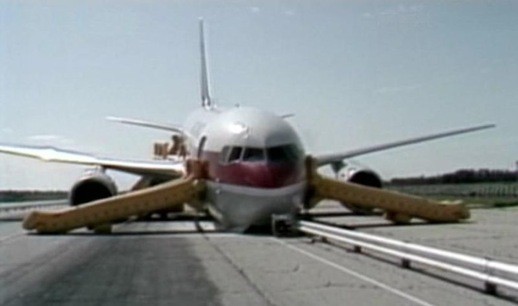On July 23, 1983, Flight 143, an Air Canada Boeing 767, lifted off from Montreal’s Montreal-Dorval International Airport on its way to Edmonton, Alberta. On board were 69 passengers and crew. Sometime around the flight’s halfway mark, while over the tiny community of Red Lake, Ontario, near the border of Manitoba, an alarm sounded in the cockpit, indicating that there was a problem with the fuel pressure on one side of the aircraft. The pilots, assuming that a fuel pump had failed, took corrective action and determined that the flight could continue. But just moments later, they received a similar warning from the other side of the aircraft. Immediately one of the engines failed and the pilots prepared to make an immediate landing at Winnipeg’s airport, the closest airport with a runway of sufficient length for a wide body jet. At this point there was no great emergency, for modern aircraft are designed to fly on just one engine. However, as the pilots spoke to the air traffic controllers in Winnipeg, they heard a new alarm, one neither man could remember hearing before. It was an alarm indicating that both engines were failing. Within seconds, many of the cockpit’s instruments went blank and an eerie silence settled over the plane as the second engine ground to a halt. Flight 143 had run out of fuel 28,000 feet above the ground.
Captain Bob Pearson and First Officer Maurice Quintal were faced with a nearly impossible task. They had to land a modern airliner, a 300,000 pound glider, without engines, without power, without most of their instruments. This event was nearly unprecedented in aviation history and neither their training nor their flight manuals had prepared them for such an event. Quick calculations showed that they would not be able to glide all the way to Manitoba. Captain Pearson suggested they try to land at his old air force base at Gimli, Manitoba. He was unaware that the air strip at Gimli had since been decommissioned and had become a drag strip. The runway had been divided into two lanes with a guard rail running along the middle. That very day was “Family Day” at the races and the area surrounding the runway was covered in cars and campers while racing fans enjoyed the day’s events. The pilots turned their plane toward Gimli, unaware of all of this.
As the aircraft approached Gimli, the skill of the pilots was tested to the extreme. Captain Pearson was an avid glider pilot and knew many of the tricks of the trade. He used one of these, executing an incredible forward slip maneuver to slow the plane and reduce altitude just before landing. Amazingly, he managed to put the plane down on the runway and to bring it to a halt without careening into the crowds. There had been insufficient power to drop the nose wheel and it collapsed as the plane touched down. This was the only major damage sustained by the aircraft. All 69 passengers and crew escaped unharmed. The 767 was quickly repaired and remained in service for almost 25 years more before being retired on January 1 of 2008. Both pilots were awarded the Fédération Aéronautique Internationale Diploma for Outstanding Airmanship.
A subsequent investigation quickly discovered what had gone wrong with the plane now referred to as the Gimli Glider. At that time Canada was in the process of converting from the imperial to the metric system of measurements. The pilot had correctly calculated the amount of fuel that would be needed to fly from Montreal to Edmonton. However, the technician responsible for fueling had incorrectly factored the conversion from metric to imperial. Flight 143 left Montreal not with 22,300 kilograms of fuel as it needed, but with 22,300 pounds, just over half of the amount necessary for that long flight. It was a simple case of looking to the wrong standard, the wrong measure, and it nearly led to tragic consequences.
I thought of this story yesterday as I pondered my tendency to adhere to wrong standards. I thought about that part of my heart, that awful depraved part, that loves to hear about the faults, the sins, the depravity of others. It is this part of my heart that holds me up to an easy standard and a wrong standard–the standard of other people. I love to measure my heart, my faith by comparing myself to others. And inevitably I often look good in comparison. We are, after all, a sinful bunch who constantly find new and creative ways of sinning against God.
There is a better measure.
To be continued tomorrow…











